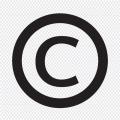This article discusses
- brochure writing, design, and printing costs.
- content and design elements of the brochure.
- practical tips for attorneys during the brochure production process.
Photography/Artwork
Being document oriented, attorneys will focus on the text of a brochure rather than other elements such as photography and illustrations. But these other elements can say as much about a firm as the most eloquent prose. Pictures, graphs, charts, and other types of illustrations can shorten required reading time and improve comprehension. The eyes of readers generally look to photos or illustrations first, headlines second, captions or "callouts" third, and text last. Therefore, the messages delivered by these other elements are often just as important as the text itself!
Good photography is both dynamic and dramatic, designed and printed to get attention. But to be effective, it must also be substantive and document the attorney's capability.
Photography can be misused to satisfy oversized egos. A common mistake is to use a photograph of a firm member in the body of the brochure, making the entire brochure an embarrassment to the firm as soon as one of those pictured depart. Identifiable photos are better used on brochure inserts, if at all.
Costs
How much does a brochure cost? This is like asking: "How much does it cost to defend a client in court?" The answer is never simple, nor can it really be known at the beginning of the project. Brochures can cost as little as $500, whereas some law firms spend $35,000 and more on a single brochure.
These dollars represent the out-of-pocket costs paid by the attorney to someone else (consultants, writers, typesetters, photographers, illustrators, and printers). There is a hidden cost of brochures in attorney time, depending, of course, on how much "hands-on" work the attorney feels is required. Estimates of brochure costs should also account for attorney time, which like the outside costs can vary from 3 hours to 300.
So how much do brochures cost? It depends on the following factors:
- Preplanning: How much has been done? Has a concept been selected? Does the attorney have a design already in mind? Have the contents been selected? Are decisions made regarding all the variables listed here? The cost here is for a consultant to help the attorney arrive at decisions. Costs can be entirely internal or can be developed with the assistance of an outside consultant. Expenses vary tremendously, because consultants will charge hourly rates ranging from $40 to $100 per hour. Time required could be up to 20 hours, or $2,000.
- Writing: This depends on the degree of internal consensus and direction that exists. The creation of the text will prompt many substantive issues that need to be resolved beforehand. Writing is relatively swift if attorney agreement is also reached on the brochure's (1) message theme and (2) prose style. Message refers to the single purpose of the brochure; style refers to variables such as formal/casual, first person/third person, and so on. Descriptive brochures should be limited to 250-400 words of general information. Additional text on specific services, practice groups, and so on is a function of brochure size. Attorneys may write the brochure themselves or hire consultants. Time required for 250-400 words is about ten hours. Freelance writers charge $75-100 per hour.
- Design: Graphic unity of all printed materials within the attorney's office is important. The brochure is not independent of letterhead, resumes, invoices, and all other printed materials. A graphic designer must be involved in the brochure production process. He or she will prepare a design concept, work with the copy writer to assure that text and design work together, and will manage the printer to maintain quality. Good designers will charge up to $100 per hour. An average is $75 per hour for concept and design and $50 for preparation of mechanical artwork and printing management. Prepare to pay a minimum of $1,000 for good design work. Brochures that are larger, use color, require various die cuts, and have unusual folds all require additional time to plan and produce. A general guideline is that the designer will require approximately 20 percent of the total brochure cost.
- Photography: Good professional photography can cost $800-1,500 per day. Depending on location, a good photographer can usually be found at the lower end of that range.
- Other artwork: Illustrations of a quality appropriate for most law firm brochures will cost at least $300. If a single artist is doing several illustrations, then the cost per unit drops significantly. Like all artists, illustrators vary in style and quality. The amount of detail requires more time, therefore higher costs.
- Mechanical art and author's corrections: Once all the components of a brochure are assembled and approvals are obtained for copy and preliminary design, the designer will send final copy revisions to the typesetter and begin the preparation of mechanical art. The designer will seek approval of the finished art before submitting it to the printer. Changes made on the designer's mechanical art are costly; even more expensive are author's (attorney) corrections made on the printer's proof (sometimes called blue line) submitted for final approval and sign-off immediately prior to printing. At the blue line stage of the process, even changing one word in a brochure can cost $250 in additional designer and printer fees!
- Paper: Most attorneys are surprised when a designer or printer shows them the vast selection of papers available for brochures. Paper has many, many characteristics, most of which affect its price. Most attorney brochures are printed onto one color of paper. Multipage brochures can use different colors of paper for interesting effects. Another option is to "reverse" print, where ink covers all the paper, except for the textual areas. The color of the text is actually the color of the paper. To the untrained eye, this looks like two colors-for instance, black ink on white paper and, elsewhere, "white" ink on "black" paper. Generally, the selection of different colors of paper has little if any affect on cost.
- Texture: Great varieties exist, each one having a different "feel" and thereby giving a different "feel" to the attorney or firm described on it. Linen, gloss, bond, coated, and book are all words that describe the texture of paper. Coated paper is more expensive than uncoated; linen is more expensive than bond. Generally, the cost is minimal when put in perspective of the overall brochure budget.
- Weight: There are also dozens of different weights, described in technical terms such as 24-pound bond and 80-pound cover. Usually, the heavier the stock, the greater the cost. The impact of heavier paper (giving a feeling of "substance") is generally worth the small additional cost.
- Number of colors of ink: The more used, the more the brochure costs. Many excellent brochures are produced using one color. One color of ink can be combined with colored paper and printed in various densities (called screens) to give the impression of several colors. Most attorney brochures use two colors, which provide opportunities to create a much greater variation of colors. If four colors are selected, printers can create unlimited additional ones. In the printer's world, there are four primary colors-black, yellow, magenta (near red), and cyan (near blue). These are combined on four-color presses to create all other colors. Using two colors instead of one, increases costs slightly (sometimes less than $100).
Here are some well-tested tips on actual production of the brochure and related printed items:
- Centralize control of the process, preferably with a single person responsible for production of the brochure and related items.
- Understand that a brochure is not a single printed item. In its best form, a brochure is a series of items, usually components that can be organized into a presentation package.
- Realize that the brochure process will prompt substantial questions about the attorney/firm goals and internal structure. Also realize that the process of brochure production will raise seemingly unrelated issues such as compensation policies, because a total plan will involve use of the brochure after production. A comprehensive distribution plan involves attorney time which will take away from billable hours. Be prepared to address these clearly before beginning the process.
- Never forget that the client is the focus of the brochure-not the attorney or firm. If the text too frequently uses the first person or third person (I/we or they), the brochure is attorney focused. The use of the second person (you) guarantees that it is focused at the reader.
- Before writing text for the brochure, achieve consensus on features of the firm ("we have practice groups") and link them to benefits to the client ("which provide a depth of service").
- Accept the fact that less is more. Readers of general brochures will spend no more than two to three minutes reviewing them and accompanying information. Therefore lengthy expositions on any topic go unread. Let the details be tailored in accompanying correspondence.
- Strive for a marriage of design and text as early as possible in the copywriting process. Words that are approved on standard paper suddenly take a far different emphasis and meaning when designed into a brochure.
- In the development process, present to the complete partnership or managing committee the design and copy at two or three junctures along the way. This ensures adoption by the total firm upon completion.
- In general, it is advisable to bring in outside consultants who are knowledgeable in graphic design and text writing, as well as sensitive to the specific needs of law firms.





